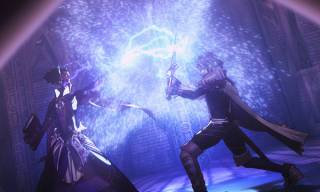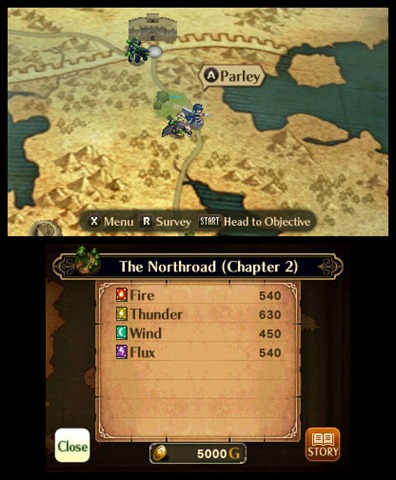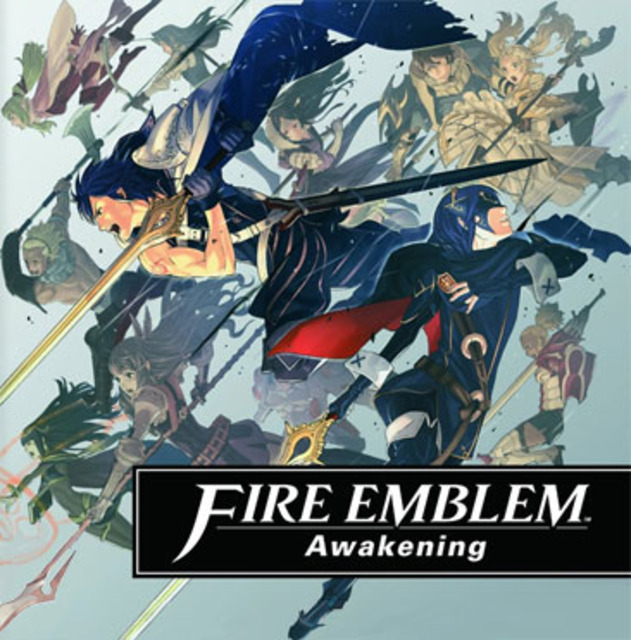The most recent entry in the Fire Emblem series combines refined strategic gameplay and clearly defined characters.
Fire Emblem has never been a popular series outside Japan. In fact, the previous game in the series never even saw an international release. Part of this may be because the series as a whole was never given high amounts of publicity; another reason could be that the slow, strategic gameplay simply does not appeal to the casual audience that Nintendo has always pursued. Yet the quality of the games themselves has never been an issue, a fact supported with the release of Fire Emblem: Awakening for the 3DS. Although by no means perfect, Fire Emblem: Awakening clearly understands what goes into making a great strategy game.

That includes the deep tactical gameplay that’s still very easy to pick up. The premise is rather simple: you control a large army in battle against another large army, each side taking turns sending units into battle in the hopes of completely wiping out the other side. Although most of the maps require that you defeat all the enemies to win, the goals are varied enough that repetition never becomes a major issue. And while there are other elements added atop all this (such as weapon advantages/degradation, different classes and their abilities, etc.), the gameplay isn’t as complex as it may seem at first. The focus is less on grand, overarching strategies and more on quickly improvised tactics on a turn by turn basis. Although appreciated more for the feelings of tension and accomplishment that it brings, this direction has the added benefit of making the game quite approachable. The battles do not require a high mental investment and it is possible to jump in and out of them whenever you desire, a handy aspect to include in a portable game like this. The transparency of its own mechanics also helps foster this type of accessibility. The game does everything in its power to inform you of these intricacies, from tutorials that can be pulled up at any time to a button that lets you see just how far the enemy can attack. As well as making the game more convenient to play, this ample amount of information also gives the challenge a sense of legitimacy. A lot of the time, you will feel like you lost a battle not because the game was withholding important information, but because you simply overlooked a very important detail.
Given how hard the game is, this air of legitimacy is completely necessary. At least on the Hard difficulty, enemy forces will rip through you quite easily. If a vulnerable unit is misplaced, or you overestimated the strength of one of your soldiers, the opposition will ruthlessly exploit this flaw and permanently kill off your more valuable characters. This is especially true of the Paralogues, puzzle-like side chapters accessible under certain conditions. (The sparse enemy population on Normal may not be enough for those looking for a serious challenge, although it is still there for those primarily interested in the story.) There are not many ways around this difficulty, either; while it is possible to grind out battles on the overworld map to become stronger, this is a very limited option, as enemy units only appear occasionally and the ability to summon enemies to fight costs a lot of gold, at least early on. As daunting as this is, though, it is hard to hold any of it against the game. While strength and pure random numbers are a factor (especially with enemy stats being randomly generated per attempt at a map), strategy will always be the determining factor for victory. The focus is on out-thinking the enemy and adapting to major changes on the fly, not letting the most powerful character carry all the weight. When combined with the difficulty of such a task, the result is a strong feeling of accomplishment for completing a chapter in the game.

Yet large scale tactical battles are not the only feature to be found in Fire Emblem: Awakening. In addition to the main story chapters and the paralogues, there are features ranging from the mildly entertaining Old Hubba to the myriad (and sometimes endearingly stupid) ways in which you can mix and match character classes and abilities. However, the more substantial features often relate to the characters themselves. Take, for instance, pairing up. It allows two units to enter battle together, one character giving the other stat boosts and potentially lending a hand in the heat of battle. The mechanics behind this are perhaps not as obvious as they would be for any other feature. Two units can only pair up if there is open space beside one of the units, and while some of the benefits of pairing up can be had by simply placing two units next to each other, the game decides which units standing next to each other count when there are multiple options, but it does not do so in a readily transparent manner. To some extent, you must fight against the game’s systems to maximize the benefits of your army.
This is not to say that the pairing up system is completely unwelcome, though. In fact, while it may sound overpowered, it actually adds a new element of risk and reward on top of the usual gameplay. Only one unit in a pair can be active at a time, and they will be the only ones who receive experience from battle (not to mention how over-pairing reduces the size of your army). In addition, the constant flow of enemies does not allow many opportunities for paired units to split up. Yet a lot of the time, pairs of any type are necessary to ensure everyone's safety on the battlefield. Rather than making battles easier, these pairs make you even more mindful of your actions in battle.

But chief among the side systems in Fire Emblem: Awakening are the supports, conversations between two characters that are unlocked as they spend more time together. Of all the features, they receive the most focus and attention, and rightfully so. Some of the value comes from the stat boosts they give strongly supported units in battle, and the varied amount of customization that they eventually bring, the large majority of the value of the supports comes from the characters that they focus on. Fire Emblem is traditionally known for its wide cast of colorful characters, and Awakening is no exception. From the needlessly grim Henry and nervous dancer Olivia, to the referential Owain and the walking dictionary that is Miriel, every character has a strongly defined personality, and given the sheer number of them, it would be quite difficult to find one that you don’t like. Given how easy it is to bond with certain characters, the quality of the writing goes a long way toward making the permanent death of a character a tangible loss.
Perhaps no character better demonstrates this than the one that you create yourself. At the beginning of the game, you are given a decent range of ways to customize this person to your liking (although the variety of male voices makes itself obvious). After this, the story begins with this character you created predicting the death of the protagonist (a young lord by the name of Chrom) shortly before meeting him for the first time. Both his ability to foresee the future and his vision of a dead Chrom are worked into every aspect of his character. In fact, he is made the army’s tactician for both of these reasons, reflecting the amount of thought put into his character and role in the story. And that is just one example out many similarly well written characters. The only characters without strong personalities, sadly, tend to be the villains, whose motivations are too weak to elevate them beyond simply evil caricatures rather than actual human beings.

That weakness is more a symptom of a generally lacking plotline than anything else. The elements of a good plot are there, but for whatever reason, they simply do not come together. The beginning is slow, choosing to take its time establishing the many rules of its world over creating more exciting events. A feeling of anticipation and build-up forms because of it, and eventually, the story delivers on this promise, at least thematically and for the characters. Part of the reason why the characterization is so well executed is because the writing acts in service of them. One of its primary purposes is to constantly give them things that will propel their own stories in interesting new directions, a task Awakening performs spectacularly. This is especially true of one particular event about halfway through the story which almost all the characters are forced to deal with. The themes, too, are given just as much thought and exploration. The story largely concerns itself with the idea (and limits) of fighting fate, an idea that it explains time and time again, but still explores multiple facets of through some very memorable moments. Even the later paralogues demonstrate how malleable destiny is, although this might simply be a happy accident of their design.
However, there is never any true pay-off for the plot itself. Events are exciting in themselves, but more often than not, do not clearly affect the wider reaching story as a whole. A good example of this comes midway through the game, when the first major story arc is wrapped up. To continue throughout the story, a new conflict is introduced: an emperor on another continent far away is conquering the various kingdoms, and someone has come in search of military aid against this conquest. This new story arc is not foreshadowed or built up at any previous point in the story, so it feels abrupt and not integrated particularly well into the plot. (In addition, observant players may note that the two arcs share some key similarities, although this should not affect the quality of either one.) Unfortunately, this feeling is constant throughout the story (albeit not as strongly as it is with this one particular event), leaving the narrative feeling fractured and perhaps not as complex and rounded as it needs to be.
It is difficult to ignore problems these significant with the game, but it should stand as a testament toward its other achievements that these problems do little to mask just how great the overall product is. Awakening offers a very wide but still well developed and memorable cast of characters, each one situated in chapters known for their rich, strategic gameplay and a tough but fair challenge to go with it. Even if the plot isn’t as refined as the other elements are, the game is still worth the time of any 3DS owner.
